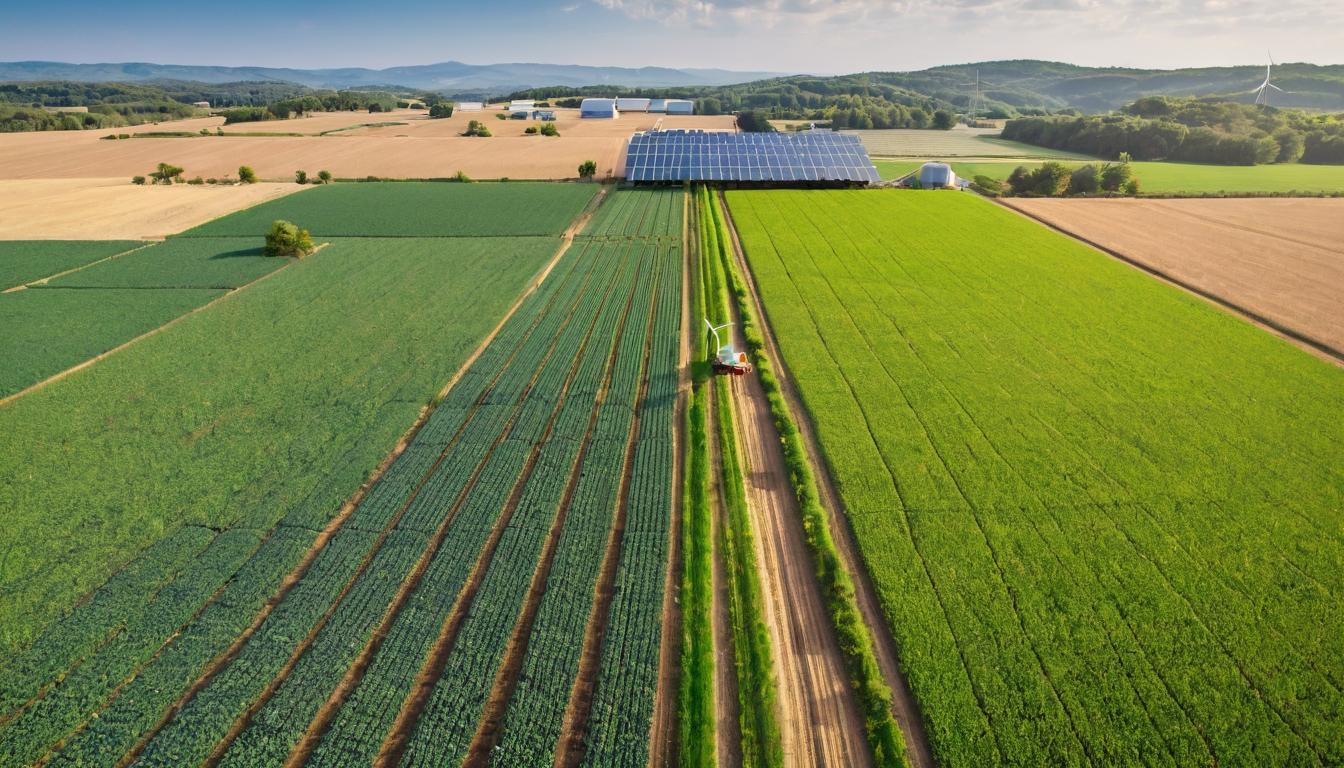In the quiet corridors of power and the sprawling fields of rural America, a transformation is unfolding that challenges everything we thought we knew about energy. This isn't just about solar panels and wind turbines—it's about a fundamental restructuring of how we produce, distribute, and think about power. The evidence is mounting that we're witnessing not just an energy transition, but an energy revolution.
Across the Midwest, farmers who once relied solely on corn and soybeans are now harvesting electrons from the sky. Solar installations are cropping up between crop rows, creating what energy analysts call "agrivoltaics"—the simultaneous use of land for both agriculture and solar energy generation. The results are surprising: certain crops actually thrive in the partial shade provided by elevated solar panels, reducing water evaporation and creating microclimates that boost yields. This dual-use approach is solving one of renewable energy's biggest challenges—land use conflicts—while putting extra income in farmers' pockets.
Meanwhile, in urban centers, a quiet battle is brewing over who controls the electrons flowing through our grids. Community choice aggregation programs are giving municipalities unprecedented power to choose their energy sources, bypassing traditional utility monopolies. These local energy revolutions are allowing cities to demand cleaner power, negotiate better rates, and keep energy dollars circulating within their communities. The movement has grown from a handful of California communities to nearly 2,000 municipalities across eight states, representing what one energy democracy advocate calls "the most significant restructuring of the electricity sector since the days of Thomas Edison."
The battery storage revolution is happening faster than anyone predicted. Just five years ago, large-scale energy storage was considered a distant dream. Today, massive battery installations are popping up across the country, with projects that can power hundreds of thousands of homes for hours at a time. The cost of lithium-ion batteries has plummeted 89% since 2010, making storage economically viable in ways that seemed impossible a decade ago. These aren't just backup systems—they're becoming the new backbone of our grid, smoothing out renewable energy's intermittency and providing crucial grid services that keep the lights on during extreme weather events.
What's driving this acceleration? The answer lies in an unlikely combination of corporate ambition, technological breakthroughs, and policy tailwinds. Major corporations are now procuring renewable energy at record rates, with tech giants like Google and Amazon leading the charge. Their massive power purchase agreements are creating demand certainty that's driving down costs across the entire renewable energy supply chain. Meanwhile, the Inflation Reduction Act has unleashed a wave of investment in domestic manufacturing, with new factories for solar panels, wind turbines, and batteries announced in states from Georgia to Ohio.
The workforce transformation is equally dramatic. Oil and gas workers from Texas to North Dakota are retraining for careers in renewable energy, bringing their expertise in large-scale project management and complex engineering to wind and solar development. Union apprenticeships for solar installers and wind technicians are seeing record enrollment, while community colleges across the country are launching certificate programs for the green jobs of tomorrow. This isn't just about saving the planet—it's about creating good-paying jobs that can't be outsourced.
But the revolution faces significant headwinds. Transmission constraints threaten to bottleneck the clean energy transition, with projects stuck in interconnection queues that can last years. The process of building new power lines has become so bogged down in regulatory hurdles and local opposition that some analysts worry we're building renewable generation faster than we can connect it to population centers. Solving this challenge requires not just technological innovation, but political will and community engagement on a massive scale.
The distributed energy revolution is creating both opportunities and challenges for traditional utilities. As more homeowners install rooftop solar and batteries, utilities are grappling with how to maintain grid reliability while their traditional business model erodes. Some are embracing the change, investing in grid modernization and new rate structures that reward flexibility. Others are fighting rearguard actions, pushing for fees and regulations that could slow the adoption of distributed energy resources. The outcome of this struggle will determine whether we get an energy system that's more democratic and resilient, or one that preserves the status quo.
Perhaps the most exciting development is happening at the intersection of energy and digital technology. Artificial intelligence is optimizing everything from power plant operations to home energy use, while blockchain is enabling peer-to-peer energy trading between neighbors. These digital innovations are creating an energy system that's not just cleaner, but smarter and more responsive to human needs. The result is what energy experts call the "internet of energy"—a decentralized, intelligent network that can balance supply and demand in real-time, reducing costs and improving reliability.
As this revolution accelerates, it's creating unexpected alliances and strange bedfellows. Environmentalists are working with farmers, tech companies are partnering with utilities, and red states are competing with blue states for clean energy investment. The old divides between left and right, urban and rural, are breaking down in the face of economic opportunity and energy security concerns. What's emerging is a new energy consensus that transcends traditional political boundaries.
The stakes couldn't be higher. Success means not just averting climate catastrophe, but creating a more resilient, equitable energy system that powers economic growth for decades to come. Failure means falling behind in the global race for clean energy dominance while leaving communities vulnerable to energy price shocks and extreme weather. The revolution is here—the question is whether we'll have the vision and courage to see it through.
The hidden revolution transforming America's energy landscape

